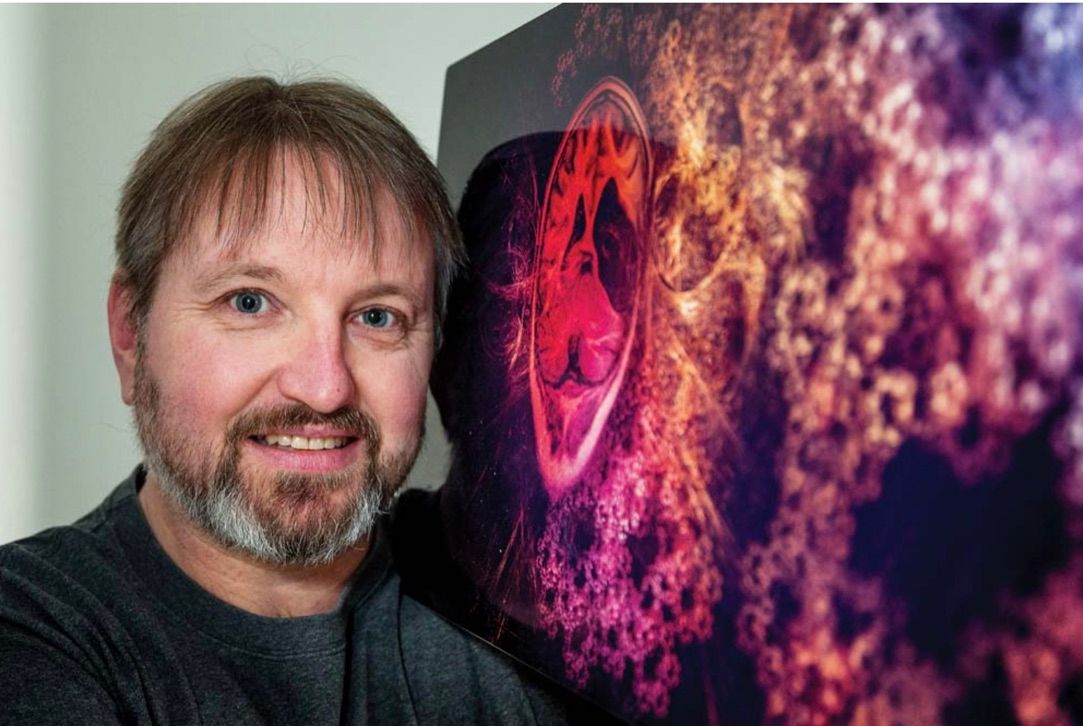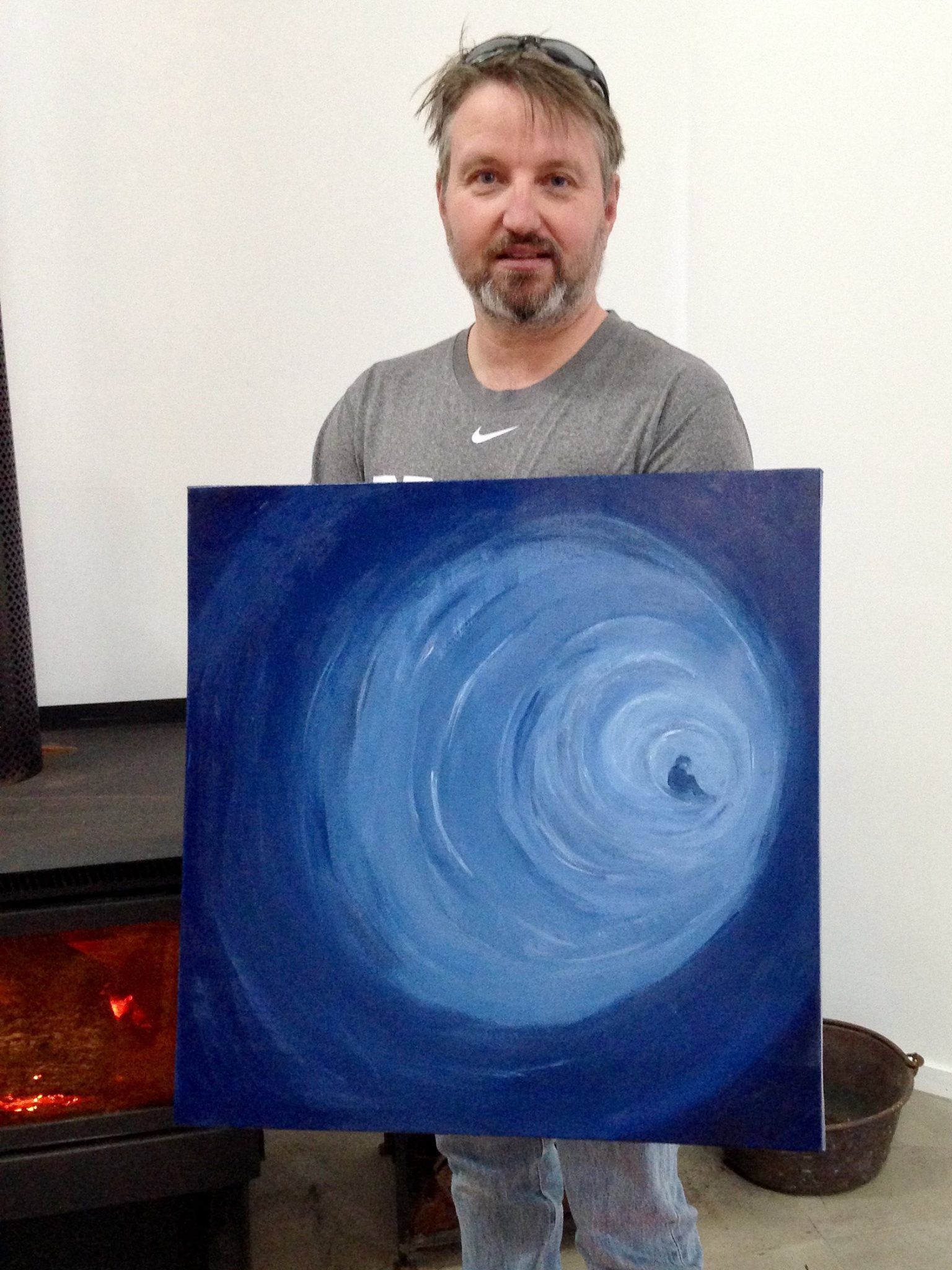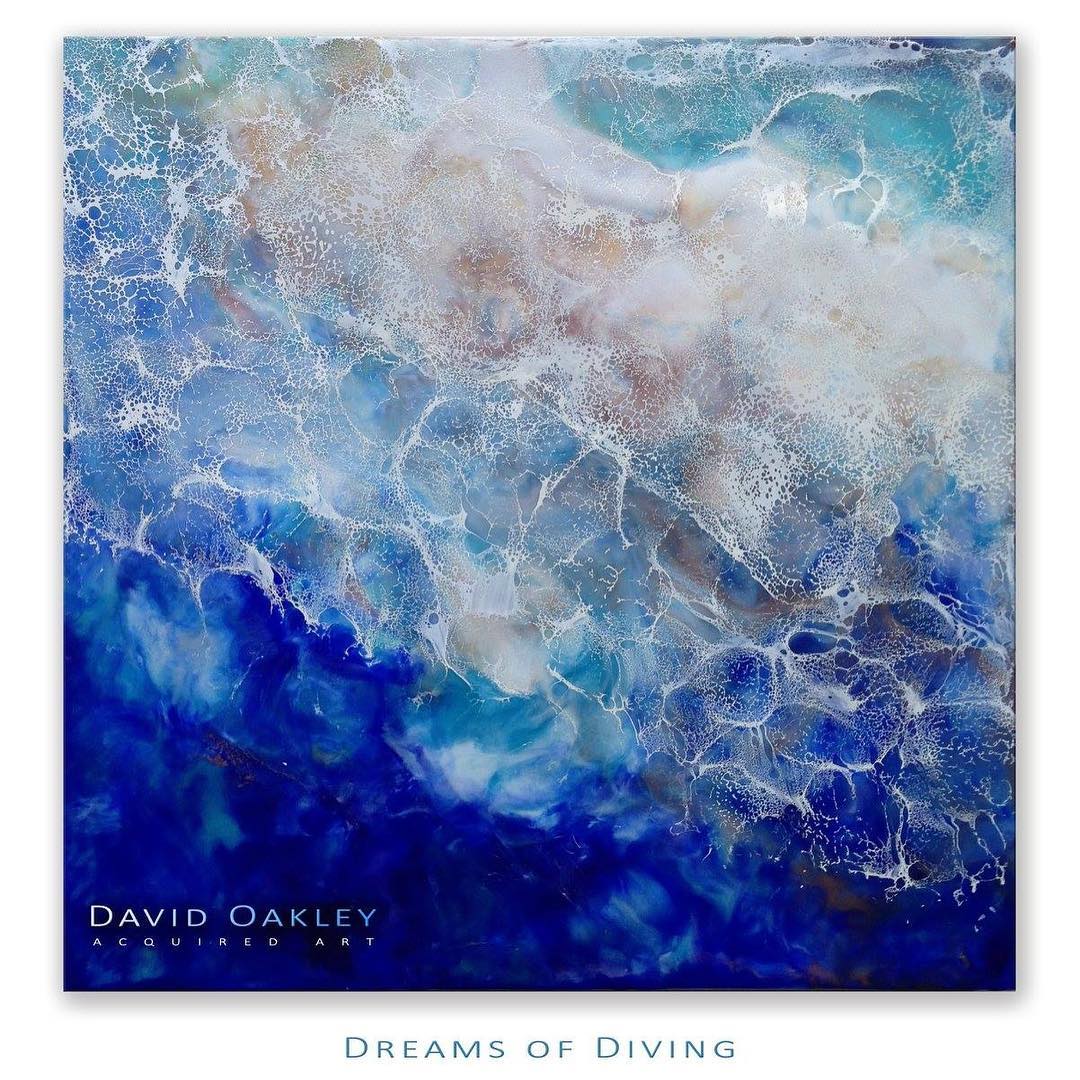David Oakley - A story of resilience, grit and determination - Part 2
In Part 1 we looked at some beautiful art works by David Oakley. David now gives talks to 3rd year university students as he wants to share his story as widely as possible. I was humbled to interview David for AnArt4Life and to share his story with you. This post is a little different as we do not have many images to share due to the circumstances surrounding this stage of David's life.
David, a mixed media artist, has lived two lives. Life One was your usual existence of a talented young man, adept at many skills in a changing world. In the late 1990s, being computer coding savvy, he led the charge of early website development, and graphic design. Mixed with an active social life and leading scuba diving tours he was pretty happy with how his life was travelling.

In August 2002, David started his ‘second’ life courtesy of an unexpected and unwanted event.
David, whilst at work, was viciously attacked with a hammer during an armed robbery. The perpetrator was later arrested and charged with 2 counts of attempted murder (as a colleague, Geoff, was also brutally attacked) and subsequently given a gaol sentence of approximately 20 years.
After the attack David was left for dead: with severe head injuries, he spent several days on life support at The Alfred, a major hospital in Melbourne.
After being in a coma for many months David progressed to a serious acquired brain injury stage. The neurosurgeons told his family that the prognosis was not good. After removing 16% of David's brain that had been damaged in the attack, they said it would be unlikely he would walk or talk again. David had other ideas!
David with the help of his life partner Rika and some incredibly skilled health clinicians, learnt to breathe on his own and after 5 months in hospital was discharged to commence rehabilitation at a Melbourne clinic. Rika continued to visit everyday trekking in from the suburbs to support David throughout every painful step.
It was clearly not an easy path. David had to learn to breathe without the aid of a machine, to walk and to talk again. He spent a lot of time with speech and physiotherapists, and he speaks fondly of these skilled people.
It was about 2 years before he was able to go out into the community. David still found speaking difficult and he said laughingly "I would use my camera to photograph what I would like, such as a lovely cup of coffee, not just any coffee, it had to be a lovely one!"
Three years of incredibly hard work had David breathing by himself, walking, talking and he was also able to start thinking about his art.
David recounted: "I was so close to death: the early days of exercise were so exhausting, but I had plenty of time to think. My thoughts turned to: what is really important to me? I could no longer consider underwater photography as I have this plate in my head." He says: "I want to work with animals." With a chuckle David continues: "I probably wouldn’t be able to become a vet so what else can I do ... I decided I want my job to be drawing and painting animals ...this is how I want to spend the rest of my life!"

David explained those early steps: "My vision was all over the place. I don’t see out of the right side of both eyes; my eyes are OK it is an issue in the brain. So, I don’t have peripheral vision. What I see looks like a photograph with a broken background."1 David continued to describe another problem he had was associated with pressure. "I tried to paint; I was terrible. I could not get the correct pressure. Either the paint was not touching the canvas, or it would go splat! I did not want to be an abstract painter so I thought - my goodness, the harsh reality is I am not going to be able to do this and I crashed thinking I can’t do it anymore."
1. an aesthetic out of focus blur seen in a photograph

Editors note: David can no longer scuba dive, he highlights..."as now I have this lump of metal in me head".
In David’s story so far, we have learnt that he has immense grit and determination. This harsh lesson was no different, David did what he knew best, he kept doing things and trying things. Ultimately, he returned to what he knew well, digital art techniques. He was grateful that the ‘technology’ side of his brain still worked! David also found that as his vision was not distracted by distance, he could focus on detail, a bonus for an artist.
Please join me for Part 3 when we will delve into the inventive ways David refined his art skills, using everything from the humble mechanical pencil to cutting edge software programs. As well as the the new skill he mastered, making picture frames.
A very special thank you to David Oakley who kindly gave permission for the images of his work to be shared on AnArt4Life.
